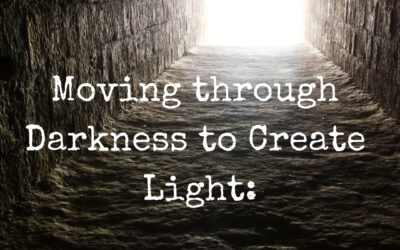Recently, I walked down the street from my office to grab a protein bar at the local Starbucks—and discovered something shocking: every Starbucks in Hermosa Beach (except the one inside Vons) had closed permanently.
I paused. For many people, Starbucks isn’t just a coffee stop—it’s part of their daily ritual: a familiar rhythm in their morning, a moment of consistency in a changing world. That realization made me reflect: What happens when rituals disappear? What does it say about their value—and about how much we rely on them for emotional stability, connection or even grounding?
I don’t personally have a Starbucks ritual, but I’ve had to create, replace, and sometimes mourn rituals in my own life. Some were healthy and meaningful; others were habits that drained me. Reflecting on those patterns gives us power over our mental health.
To put it into perspective: Starbucks sells millions of pumpkin spice lattes each season. (Unofficial stats suggest over 200 million cups in a typical season across the U.S.) That’s not just coffee—it’s a ritual many embrace. But when we look closer, we see the cost (in calories, additives, and dollars) and can ask: Is this serving me, or consuming me?
Healthy Rituals That Nourish the Mind
When we talk about rituals, we don’t need something grand or spiritual. The most consistent rituals are often small, daily, and elemental. Here are some that tend to support mental health:
- Meditation / Mindfulness — Starting or ending the day with quiet presence. Not sure where to start? Try an app like Insight Timer.
- Movement — Running, walking, yoga, stretching
- Tea or Coffee Pause — Slow, mindful sipping (not rush or digital multitasking)
- Nature Rituals — Watching sunsets, hearing birds, gazing at the ocean
- Creative Micro-Rituals — Journaling, drawing, lighting a candle, writing a letter
- Connective Rituals like Family Dinners – put down electronic devices and talk about highlights, gratitudes and challenges.
- Seasonal / Holiday Rituals — Setting intention for solstice, birthdays, small ceremonies
These rituals work partly because they anchor us: we allocate the same time, in the same way, regularly. That regularity helps our nervous system predict patterns, which fosters safety and internal stability.
Rituals That Sabotage: Hidden Costs
Just as rituals can support us, they can also trap us—especially when they’re habitual but harmful. Here are a few to watch:
- Alcohol as “winding down” — While it may feel relaxing, growing evidence shows that alcohol increases cortisol, disrupts sleep, and raises the long-term risk for serious health conditions (e.g. liver disease, cardiovascular issues, mood disorders).
- Pumpkin Spice Latte Rituals — Let’s be real: PSLs often carry 300–400+ calories, artificial flavorings, sugars, and cost $5–6+ each. Multiply that by dozens of weeks a year, and it’s not just a sugar ritual—it becomes a budget and health ritual with invisible costs.
- Hitting Snooze — Every time we hit snooze, it fragments sleep cycles and reduces sleep quality. The brain gets a string of half-awakenings instead of restful rest.
- Scrolling Social Media — The daily reflex: checking, comparing, doom-scrolling. It primes anxiety and rewires reward circuits. It’s a ritual that often leaves us feeling worse.
- Other subtle ones: compulsive checking (news, email), emotional “treats” tied to stress (e.g. food, shopping, chocolate), or late-night screen binges.
How to Replace the Rituals That Don’t Serve You
Replace is a strong word—transformation doesn’t usually happen overnight. But here are steps:
- Notice without judgment – Become aware of your ritual patterns (good and bad).
- Pause & assess – Ask: “Is this ritual serving me or hurting me?”
- Pick one ritual to upgrade – Don’t do all at once. Choose one (e.g. “when I hit snooze, I’ll do 5 deep breaths instead”)
- Be kind to yourself in transition – New rituals feel awkward, uncomfortable, incomplete—but discomfort is the welcome mat of growth.
- Anchor in small consistency – A 1-minute ritual, done daily, beats an elaborate ritual done sporadically.
- Iterate – Some rituals will evolve, die, or get replaced; that’s normal.
If you need to set healthy rituals — we’re here. Reach out. You’re not alone.
📍 Serving the South Bay | 💻 In-person & virtual therapy available




